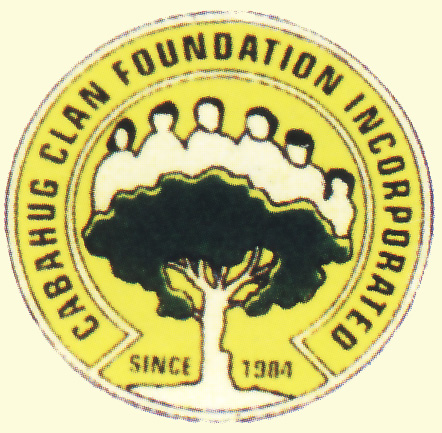

The Cabahug Name:
Before discussing the assumption that Cabahug's are related, it is will be helpful to comment on origin and spelling of the Cabahug name. While its meaning, if any, is not known, it iscertain that the surname Cabajug came into existence in 1850. In 1849, governor General Claveria issued a decree requiring all residents of the Philippines must adopt a surname. The decree specified a detailed process for selection and assigning of surnames and directed that surnames were to be used starting in June of 1850. This is an important date for understanding Cabahug family tree.
The Cabahug family name is found in four variations: Cabajug, Cabajog, Cabahug and Cabahog, which all have the same pronunciation. In Spanish, the original "jug" is pronounced the same as "hug" in English. Further, in the native Cebuano language, the letters "o" and "u" are both pronounced like the English "U". Thus all four spellings sound the same and which one is used depends on the individual recording the name.
The original name, "Cabajug" or "Cabajug", is found in all 19th century Spanish documents, and continued to be used until the 1920's. Staring in the 20's, the "Cabahug" spelling became increasingly common and was the general usage by 1930. However, a few families still retain the "Cabajug" spelling until this day.
The Cabahug Family:
Dr. Bonifacio Cabahug believed that all individuals of Cabahug ancestry were part of one big family, a followed by many clan members. While there is no definitive proof for this assumption, there are reasons to believe it to be true, and we initally adopted this hypothese in our research, in order to check its validity. The rationale is as follows:and the Cabahug Clan
First, Cabahug is an uncommon name in the Philippines and historically, most members of the family have lived in Cebu, and nearby islands. Information presented here indicates that family members mainly lived along the north and northeastern coasts of Cebu and on nearby islands in the last half of the 19th century (see Cabahug Population). An exception is Allen, located in North Samar. Further the major concentration of family members was in the towns of Consolacion, Liloan, and Mandaue, which together comprised the original town of Mandauei (see Historic Mandaue.
Second, the Cabahug name only came into existence in 1850, as a result of the decree by Governor General Claveria. That decree required all members of a given family to adopt the same surname and, in particular, required all siblingsadopt the same surname. However, we know that individuals who chose the Cabahug name were not all siblings. In particular, Nazarena and Ambrocio Cabahug in Mandaue and Juan and Francisco Cabahug in Liloan had different parents. It is still possible that they were close relatives, probably cousins, and therefore chose the same surname.
Finally, the Cabahug family of Mandaue is of Chinese mestizo origin, which is clear from the church records of Liloan, and belonged to the "Principales" (leading families) in their local communities. And members of the family were prosperous land owners, who likely participated in a family business involving production and trade of agricultural products. In this context, it is reasonable to assume that relatives with strong business and family ties would demonstrate their close relationship by adopting the same surname. Together, these observations underpin the belief that all Cabahug families are related.